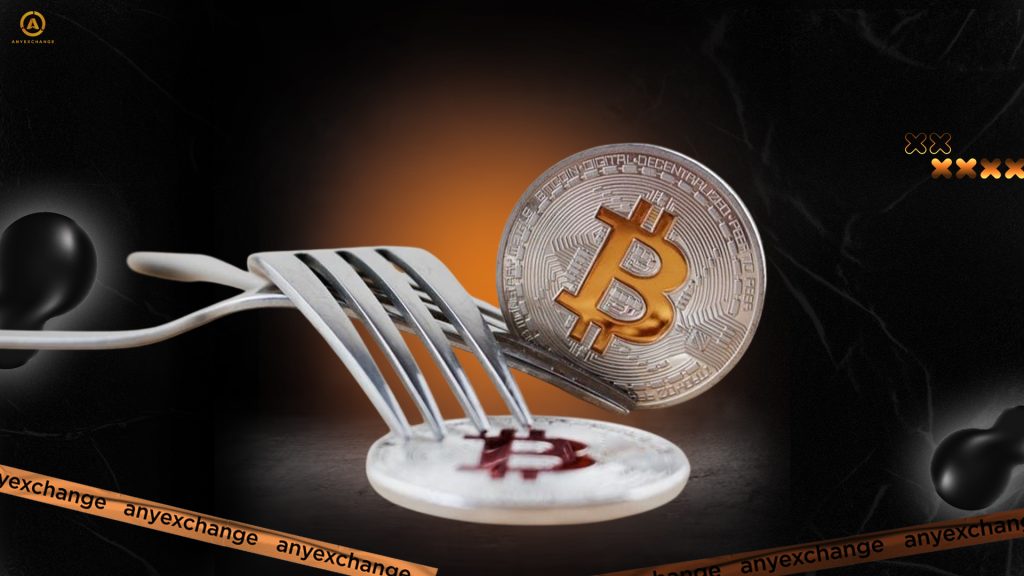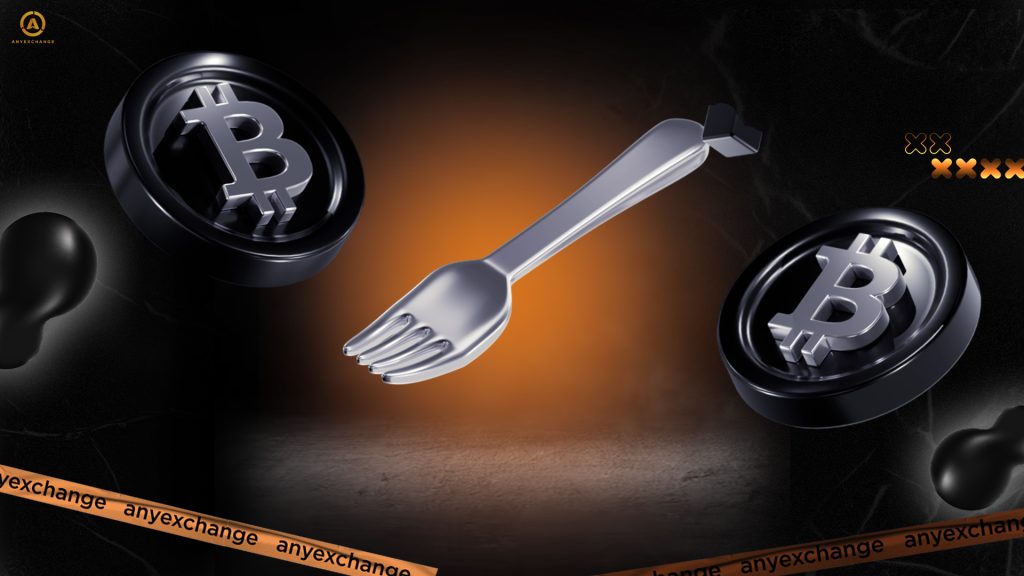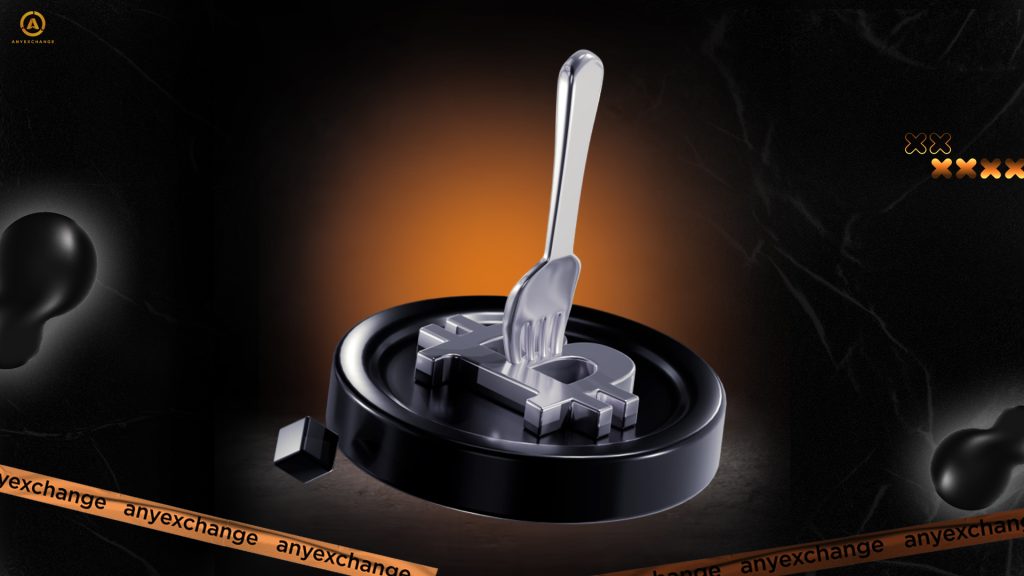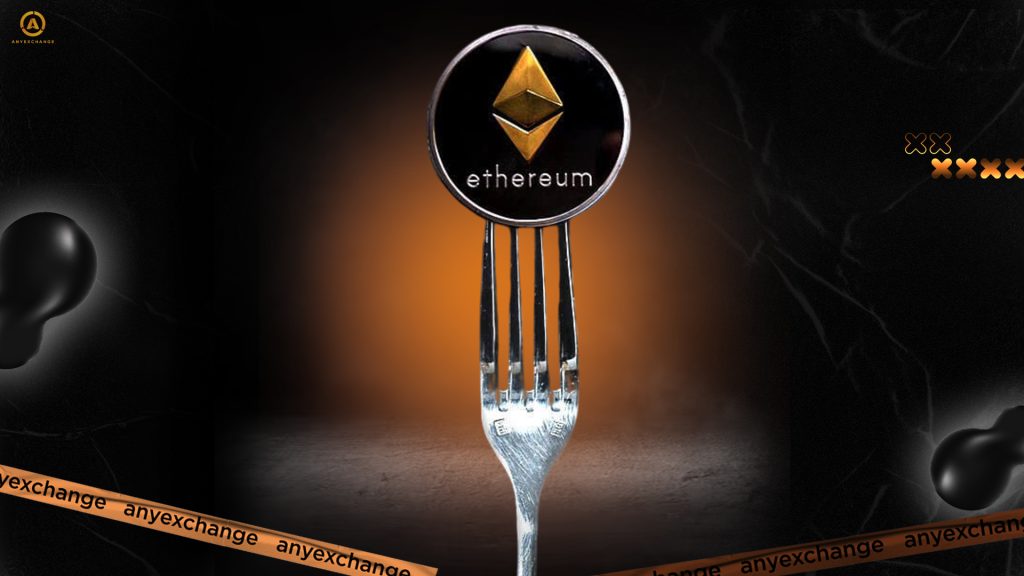
Forks are an integral part of the evolution of blockchain technology, providing an opportunity to updаte network protocols, improve network performance, and address vulnerabilities. However, the process of hardforks and softforks is often questioned by cryptocurrency investors and users due to its potential impact on network stability and asset value.
In this article, we will break down the understanding of hardforks and softforks, review the impact of forks on the cryptocurrency market, analyze the known ones, and assess their impact on blockchains and investors.
What is a cryptocurrency fork
The word “fork” also means in English “bifurcation, branch”. This term appeared in the programming community long before the first cryptocurrency appeared. It means using the code of one project as the basis for starting another.
A fork in the context of blockchain is a branching or protocol change that results in a new version of the network. It can be a minor updаte or a radical split of the blockchain into two separate networks.
Protocol updates and cryptocurrency forks play a key role in the evolution of decentralized networks, affecting users, developers, and investors.
Reasons for blockchain forks
- Updating and improving the network — introducing new features and optimizing blockchain performance.
- Community disagreements — conflict situations between developers, miners or users leading to the division of the network.
- Bug or vulnerability fixes — fixing critical security issues.
Difference between a hardfork and a softfork

Hardforks require more thorough preparation and have a significant impact on the network, while softforks have a softer, corrective impact. Let’s understand more about their risks and benefits:
- A hardfork is a significant change to a protocol that makes it incompatible with previous versions. This type of fork can involve a significant change to the cryptocurrency itself: source code, technology, mining rules. This means that network nodes running on the old protocol will not be able to interact with the new version of the blockchain. Coins are not interchangeable after a hardfork, so users who have switched to the new version will automatically convert their savings at a predetermined rate. Hardforks can lead to the creation of a new cryptocurrency, as happened with Bitcoin Cash (BCH) after the Bitcoin (BTC) fork. If we talk about the risks and benefits of hardforks, we can note that it is hardforks that create the conditions for the realization of radical improvements, the elimination of serious vulnerabilities and the emergence of new cryptocurrencies. However, the side effects of such transformations can be such consequences as division of the community, decreased trust in the network and volatility of the asset price on the market.
- A softfork is a network upgrade that makes minor technical changes while maintaining backward compatibility and common rules. Nodes running the old version of the protocol can continue to function, but an upgrade is required to take full advantage of the new features. After such a fork, coins remain interchangeable. In fact — this is a planned updаte of the systеm, as all users gradually move to the updated version. This means that the impact of soft forks on network security and efficiency is smooth, without shocks. The only risk of such changes may be the possibility of lack of unanimity among participants due to the need to updаte nodes for full operation.
Hardfork and softfork: examples and explanations

Известные хардфорки биткоина
Famous bitcoin hardforks
One of the most famous hardforks is Bitcoin Cash (BCH), which appeared in 2017 due to disagreements in the bitcoin community about increasing the block size. The developers of Bitcoin Cash believed that the blocks on the Bitcoin network should be larger in order to increase speed. It is a well-known fact that due to the fixed block size of 1MB, the transaction speed on the network of the first cryptocurrency is only about 7 transactions per second, which is far inferior to traditional payment systems. As a result, the chain split, and BTC holders received an equivalent amount of BCH.
Ethereum forks: history and consequences

In 2016, one of the most significant hardforks in blockchain history took place — the split of the Ethereum network into Ethereum (ETH) and Ethereum Classic (ETC). The reason was the hack of the DAO project, as a result of which the attackers withdrew about $50 million. Ethereum developers decided to conduct a hardform to recover the stolen funds, but part of the community refused to support this decision, which led to the creation of Ethereum Classic, which continues to work on the old version.
How forks affect investors
Forks have a significant impact on network participants, including users, developers, and investors. Key aspects of their impact inсlude
Receiving new coins
When a hardfork occurs, users who owned the original cryptocurrency often receive an equivalent number of new coins in the new chain. This can lead to additional profits if the new asset proves to be in demand in the market. For example, at the time of the Bitcoin Cash fork, Bitcoin owners automatically received BCH, while Ethereum chain members were given the option to choose between ETH and ETC.
Consequences
Forks can cause severe market volatility. Some assets created after forks lose value over time, while others find their niche and continue to be actively used. For example, Bitcoin Cash and Bitcoin SV continue to exist, but their market capitalization is much lower than the original Bitcoin.
How forks affect the market
Market volatility
The period before and after a fork is often accompanied by speculative movements. For example, before the Bitcoin Cash fork, many traders were actively accumulating BTC, which contributed to the increase in its value, and after the fork, some of the capital flowed into the new network.
Reaction of exchanges and investors
Major exchanges play an important role in recognizing new assets. For example, Ethereum Classic quickly gained support from leading exchanges, while Bitcoin SV was delisted from some platforms due to fierce disagreement in the community.
How forks affect the price of cryptocurrencies
What happens to coins after a fork? The value of a cryptocurrency can rise or fall depending on market sentiment and investor confidence. For example, after the Bitcoin Cash fork, the price of the original Bitcoin increased significantly.
The role of the community in driving forks
We know that it is the importance of the community that makes cryptocurrencies a unique financial instrument, shaping its future through open and democratic processes. Blockchain systems are decentralized, meaning there is no single center of control. As such, the community of users, developers, and miners plays a critical role in deciding whether to fork. Therefore, as in any democratic community, all innovations are preceded or accompanied by discussions and polemics. As a result, forks are often the result of community disagreements. For example, disputes over the block size in bitcoin led to the creation of Bitcoin Cash, and disagreements over the security of smart contracts led to the separation of Ethereum and Ethereum Classic.
In the case of Proof-of-Work consensus networks, the opinion of the miners is often decisive. They can support one of the chains and decide which branch remains more viable. Their position is key, as it is the miners who provide the security and hash rate that are critical to the future development of the blockchain.
How to prepare for the upcoming fork
- Stay informed.
Keeping track of news and official announcements is crucial to preparing for a fork. Users should pay attention to updates from developers, official announcements and discussions in cryptocurrency communities. It is also important to check the fork support of exchanges and wallets.
- Find out how to get new coins after the hardfork and what steps you can take to multiply your assets.
Before the fork, it is recommended to transfer funds to wallets that support the new blockchain to ensure you get new coins. You should also consider the risks of volatility: a few days before the fork, asset prices may fluctuate, creating trading opportunities but also increasing risks.
- Stay vigilant.
Forks are often accompanied by an increase in phishing attacks and fraudulent schemes. Users should exercise caution when entering personal information and never share their private keys with anyone. It is especially important to check official sources before connecting wallets to new services.
Forks and taxation of new cryptocurrencies
In many jurisdictions, receiving new coins after a hardfork is considered income and may be subject to taxation. It is important to familiarize yourself with your country’s laws beforehand to clearly understand what taxes your new coins will be subject to. Investors are also advised to keep records of all transactions related to the purchase and sale of coins after a fork to avoid future problems with tax authorities due to failure to file timely reports.
The future of forks in the cryptocurrency industry
Forks remain an important tool for the adaptation and evolution of blockchain projects. Both planned and conflict forks can be expected in the future, driven by the need to improve protocols or disagreements within communities.
Future fork trends
- Regulatory adaptation — in an environment of increasing regulation, some networks may fork to meet regulatory requirements.
- Technical improvements — improving the scalability and security of blockchains by introducing new technologies such as sharding and layer 2 protocols.
- Removing centralization — improving decentralization and governance mechanisms, which could lead to the democratization of decision making in networks.
Lessons from the past and their implications for the future
Past experience with forks has shown that they can both strengthen and weaken projects. Successful forks, such as SegWit or Ethereum 2.0, have contributed to growth, while controversial forks, such as Bitcoin Cash, have led to long-term asset instability. Analyzing these cases will allow future developers and investors to be more conscious about supporting new forks.
Conclusion
Blockchain forks and decentralization continue to evolve, creating new opportunities for cryptocurrency ecosystems and investors. These updates will continue to be an integral part of the crypto industry, enabling development, security, and decentralization. However, their impact on the market will depend on the level of community preparation, technical justification for the changes, and support from key industry players.
Thank you for your attention. Invest safely and profitably!
AnyExchange is a cryptocurrency exchanger that has been successfully operating on the international financial market for more than 5 years. Our platform allows you to convert popular digital assets at the best possible exchange rate. We work with the most popular international payment systems, and make payments with bank cards and cash. Through our website you can make fast and anonymous money transfers all over the world.






